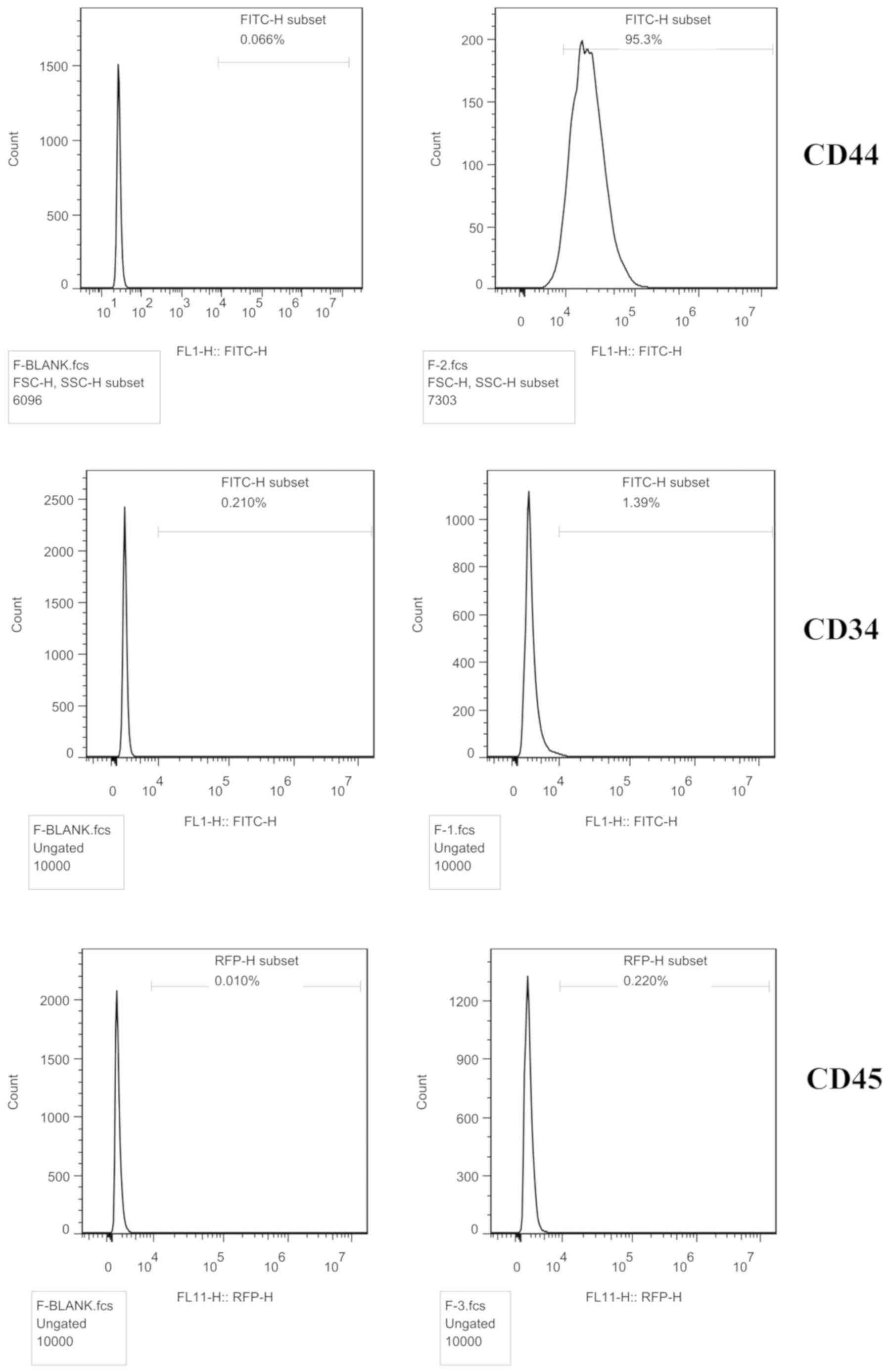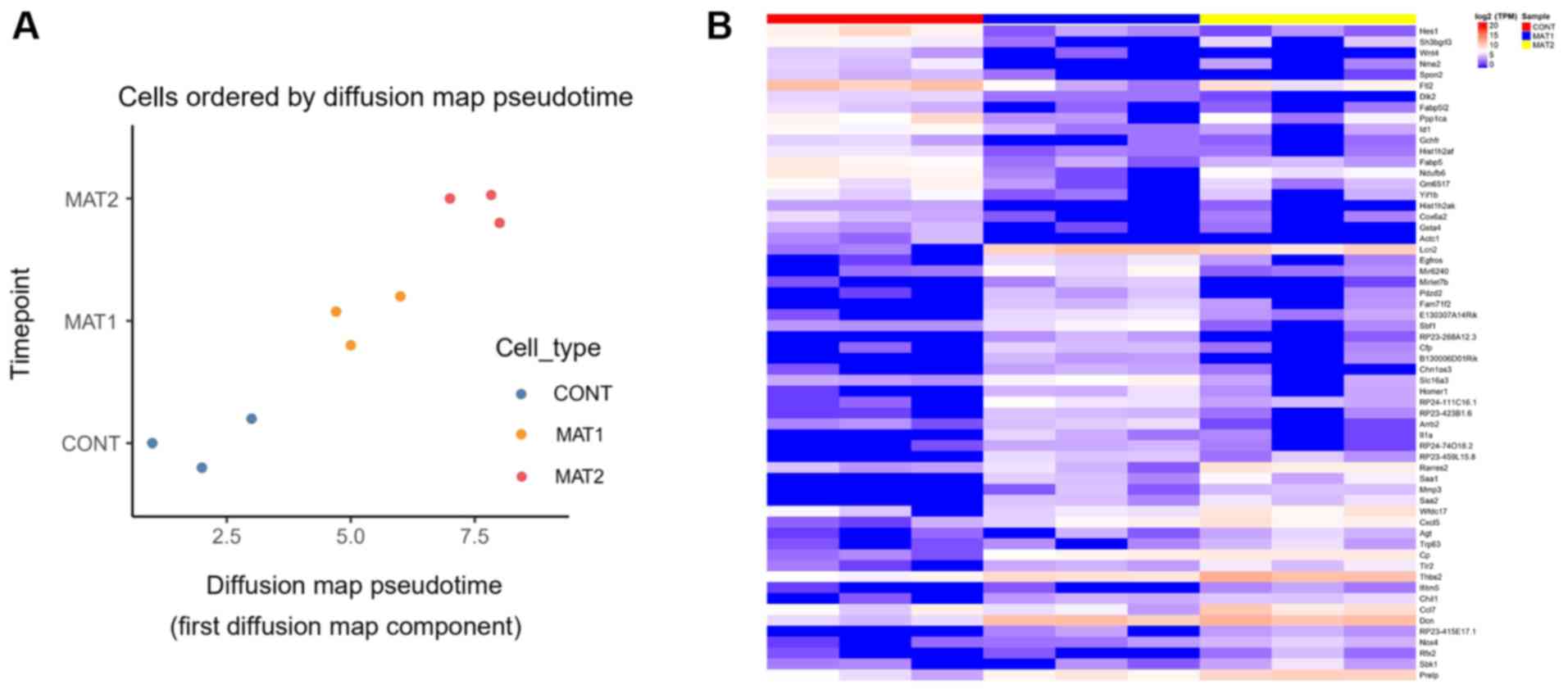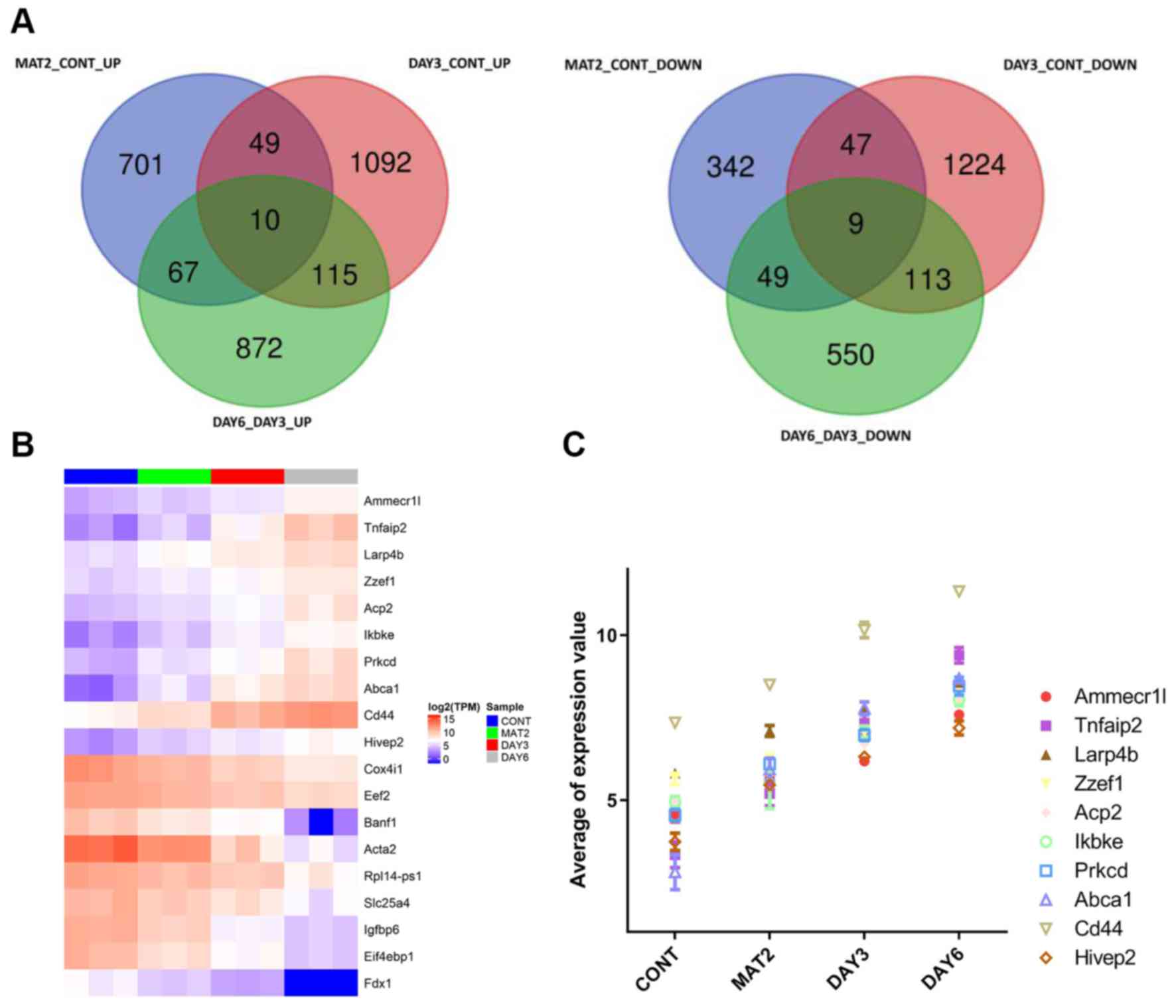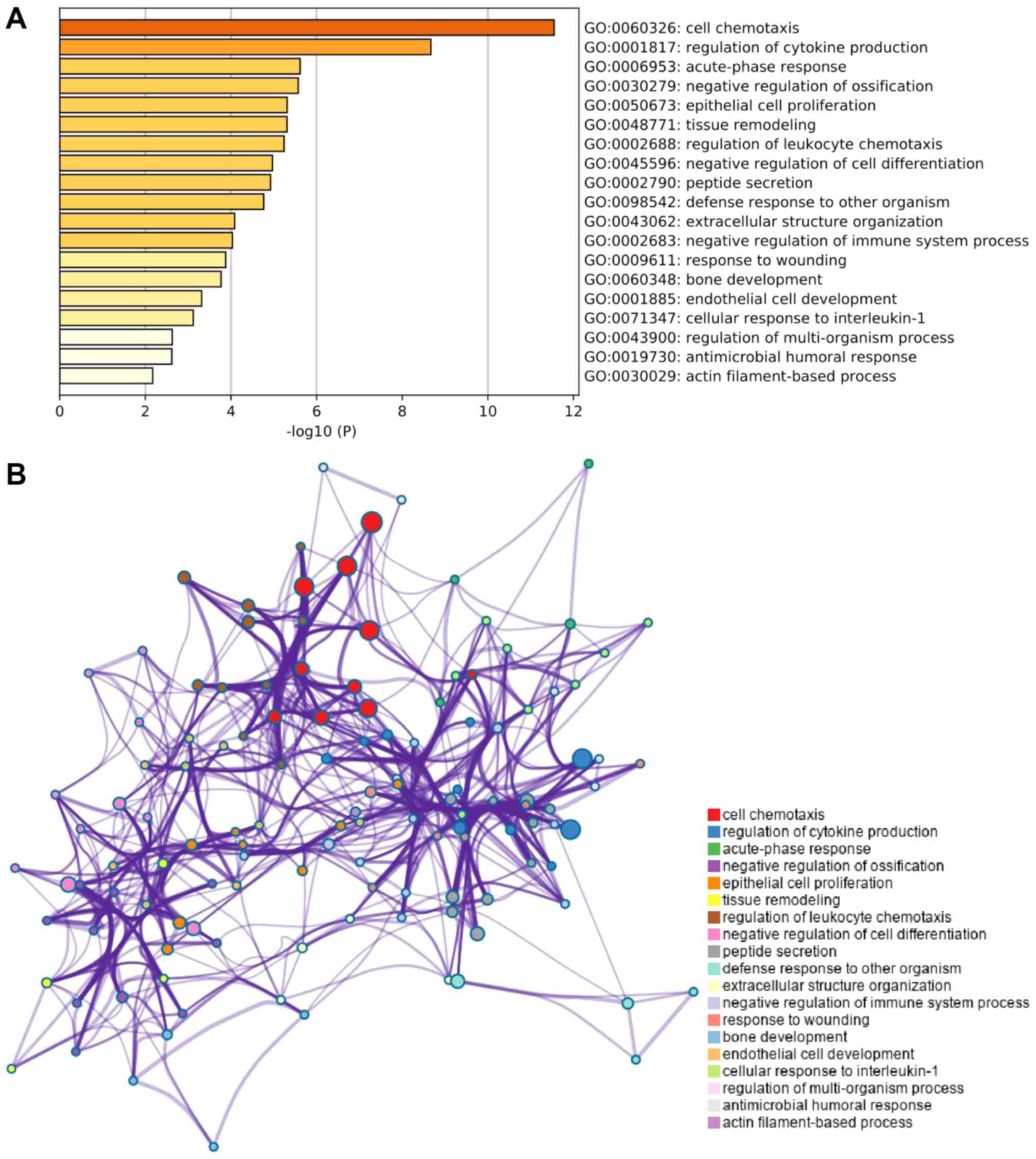|
1
|
Huang Z, Ding C, Li T and Yu SPC: Current
status and future prospects for disease modification in
osteoarthritis. Rheumatology (Oxford). 57 (Suppl 4):iv108–iv123.
2018.PubMed/NCBI View Article : Google Scholar
|
|
2
|
Abramson SB, Attur M and Yazici Y:
Prospects for disease modification in osteoarthritis. Nat Clin
Pract Rheumatol. 2:304–312. 2006.PubMed/NCBI View Article : Google Scholar
|
|
3
|
Karsdal MA, Leeming DJ, Dam EB, Henriksen
K, Alexandersen P, Pastoureau P, Altman RD and Christiansen C:
Should subchondral bone turnover be targeted when treating
osteoarthritis? Osteoarthritis Cartilage. 16:638–646.
2008.PubMed/NCBI View Article : Google Scholar
|
|
4
|
Ito Y, Ochi M, Adachi N, Sugawara K,
Yanada S, Ikada Y and Ronakorn P: Repair of osteochondral defect
with tissue-engineered chondral plug in a rabbit model.
Arthroscopy. 21:1155–1163. 2005.PubMed/NCBI View Article : Google Scholar
|
|
5
|
Ebihara G, Sato M, Yamato M, Mitani G,
Kutsuna T, Nagai T, Ito S, Ukai T, Kobayashi M, Kokubo M, et al:
Cartilage repair in transplanted scaffold-free chondrocyte sheets
using a minipig model. Biomaterials. 33:3846–3851. 2012.PubMed/NCBI View Article : Google Scholar
|
|
6
|
Sivasubramaniyan K, Ilas DC, Harichandan
A, Bos PK, Santos DL, de Zwart P, Koevoet WJLM, Owston H, Bühring
HJ, Jones E and van Osch GJVM: Bone marrow-harvesting technique
influences functional heterogeneity of mesenchymal stem/stromal
cells and cartilage regeneration. Am J Sports Med. 46:3521–3531.
2018.PubMed/NCBI View Article : Google Scholar
|
|
7
|
Otsuru S, Tamai K, Yamazaki T, Yoshikawa H
and Kaneda Y: Bone marrow-derived osteoblast progenitor cells in
circulating blood contribute to ectopic bone formation in mice.
Biochem Biophys Res Commun. 354:453–458. 2007.PubMed/NCBI View Article : Google Scholar
|
|
8
|
Li H, Dai K, Tang T, Zhang X, Yan M and
Lou J: Bone regeneration by implantation of adipose-derived stromal
cells expressing BMP-2. Biochem Biophys Res Commun. 356:836–842.
2007.PubMed/NCBI View Article : Google Scholar
|
|
9
|
Hayashi O, Katsube Y, Hirose M, Ohgushi H
and Ito H: Comparison of osteogenic ability of rat mesenchymal stem
cells from bone marrow, periosteum, and adipose tissue. Calcif
Tissue Int. 82:238–247. 2008.PubMed/NCBI View Article : Google Scholar
|
|
10
|
Pitchford SC, Furze RC, Jones CP, Wengner
AM and Rankin SM: Differential mobilization of subsets of
progenitor cells from the bone marrow. Cell Stem Cell. 4:62–72.
2009.PubMed/NCBI View Article : Google Scholar
|
|
11
|
de Girolamo L, Lucarelli E, Alessandri G,
Avanzini MA, Bernardo ME, Biagi E, Brini AT, D'Amico G, Fagioli F,
Ferrero I, et al: Mesenchymal stem/stromal cells: A new ‘cells as
drugs’ paradigm. Efficacy and critical aspects in cell therapy.
Curr Pharm Des. 19:2459–2473. 2013.PubMed/NCBI View Article : Google Scholar
|
|
12
|
Oryan A, Alidadi S, Moshiri A and Maffulli
N: Bone regenerative medicine: Classic options, novel strategies,
and future directions. J Orthop Surg Res. 9(18)2014.PubMed/NCBI View Article : Google Scholar
|
|
13
|
Tuli R, Tuli S, Nandi S, Wang ML,
Alexander PG, Haleem-Smith H, Hozack WJ, Manner PA, Danielson KG
and Tuan RS: Characterization of multipotential mesenchymal
progenitor cells derived from human trabecular bone. Stem Cells.
21:681–693. 2003.PubMed/NCBI View Article : Google Scholar
|
|
14
|
Hernigou P and Beaujean F: Treatment of
osteonecrosis with autologous bone marrow grafting. Clin Orthop
Relat Res 14-23, 2002.
|
|
15
|
Qin X, Raj RM, Liao XF, Shi W, Ma B, Gong
SQ, Chen WM and Zhou B: Using rigidly fixed autogenous tooth graft
to repair bone defect: An animal model. Dent Traumatol. 30:380–384.
2014.PubMed/NCBI View Article : Google Scholar
|
|
16
|
Korhonen RK and Jurvelin JS: Compressive
and tensile properties of articular cartilage in axial loading are
modulated differently by osmotic environment. Med Eng Phys.
32:155–160. 2010.PubMed/NCBI View Article : Google Scholar
|
|
17
|
Siqueira L, Passador FR, Costa MM, Lobo AO
and Sousa E: Influence of the addition of β-TCP on the morphology,
thermal properties and cell viability of poly (lactic acid) fibers
obtained by electrospinning. Mater Sci Eng C Mater Biol Appl.
52:135–143. 2015.PubMed/NCBI View Article : Google Scholar
|
|
18
|
Finkemeier CG: Bone-grafting and
bone-graft substitutes. J Bone Joint Surg Am. 84:454–464.
2002.PubMed/NCBI View Article : Google Scholar
|
|
19
|
Giannoudis PV, Dinopoulos H and Tsiridis
E: Bone substitutes: An update. Injury. 36 (Suppl 3):S20–S27.
2005.PubMed/NCBI View Article : Google Scholar
|
|
20
|
Lu JX, Flautre B, Anselme K, Hardouin P,
Gallur A, Descamps M and Thierry B: Role of interconnections in
porous bioceramics on bone recolonization in vitro and in vivo. J
Mater Sci Mater Med. 10:111–120. 1999.PubMed/NCBI View Article : Google Scholar
|
|
21
|
Ikeda R, Fujioka H, Nagura I, Kokubu T,
Toyokawa N, Inui A, Makino T, Kaneko H, Doita M and Kurosaka M: The
effect of porosity and mechanical property of a synthetic polymer
scaffold on repair of osteochondral defects. Int Orthop.
33:821–828. 2009.PubMed/NCBI View Article : Google Scholar
|
|
22
|
Oryan A, Kamali A, Moshiri A and Baghaban
Eslaminejad M: Role of mesenchymal stem cells in bone regenerative
medicine: What is the evidence? Cells Tissues Organs. 204:59–83.
2017.PubMed/NCBI View Article : Google Scholar
|
|
23
|
Kashte S, Jaiswal AK and Kadam S:
Artificial bone via bone tissue engineering: Current scenario and
challenges. Tissue Eng Regen Med. 14:1–14. 2017.PubMed/NCBI View Article : Google Scholar
|
|
24
|
Majidinia M, Sadeghpour A and Yousefi B:
The roles of signaling pathways in bone repair and regeneration. J
Cell Physiol. 233:2937–2948. 2018.PubMed/NCBI View Article : Google Scholar
|
|
25
|
Thaler R, Sturmlechner I, Spitzer S,
Riester SM, Rumpler M, Zwerina J, Klaushofer K, van Wijnen AJ and
Varga F: Acute-phase protein serum amyloid A3 is a novel paracrine
coupling factor that controls bone homeostasis. FASEB J.
29:1344–1359. 2015.PubMed/NCBI View Article : Google Scholar
|
|
26
|
Capulli M, Ponzetti M, Maurizi A,
Gemini-Piperni S, Berger T, Mak TW, Teti A and Rucci N: A complex
role for lipocalin 2 in bone metabolism: Global ablation in mice
induces osteopenia caused by an altered energy metabolism. J Bone
Miner Res. 33:1141–1153. 2018.PubMed/NCBI View Article : Google Scholar
|
|
27
|
Huang W, Zhang K, Zhu Y, Wang Z, Li Z and
Zhang J: Genetic polymorphisms of NOS2 and predisposition to
fracture non-union: A case control study based on han Chinese
population. PLoS One. 13(e0193673)2018.PubMed/NCBI View Article : Google Scholar
|
|
28
|
Kacerovsky-Bielesz G, Chmelik M, Ling C,
Pokan R, Szendroedi J, Farukuoye M, Kacerovsky M, Schmid AI, Gruber
S, Wolzt M, et al: Short-term exercise training does not stimulate
skeletal muscle ATP synthesis in relatives of humans with type 2
diabetes. Diabetes. 58:1333–1341. 2009.PubMed/NCBI View Article : Google Scholar
|
|
29
|
Hermann-Kleiter N, Ghaffari-Tabrizi N,
Blumer MJ, Schwarzer C, Mazur MA and Artner I: Lasp1 misexpression
influences chondrocyte differentiation in the vertebral column. Int
J Dev Biol. 53:983–991. 2009.PubMed/NCBI View Article : Google Scholar
|
|
30
|
Han S, Wang T, Chen Y, Han Z, Guo L, Wu Z,
Yan W, Wei H, Liu T, Zhao J, et al: High CCL7 expression is
associated with migration, invasion and bone metastasis of
non-small cell lung cancer cells. Am J Transl Res. 11:442–452.
2019.PubMed/NCBI
|
|
31
|
Knight MN and Hankenson KD: Mesenchymal
stem cells in bone regeneration. Adv Wound Care (New Rochelle).
2:306–316. 2013.PubMed/NCBI View Article : Google Scholar
|



















